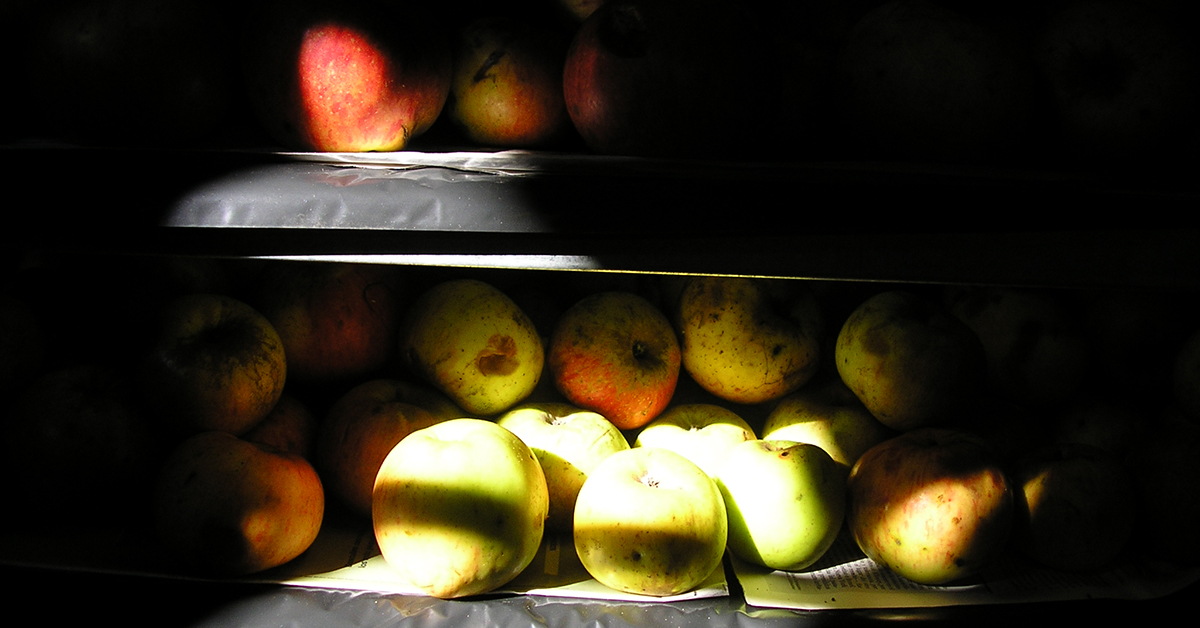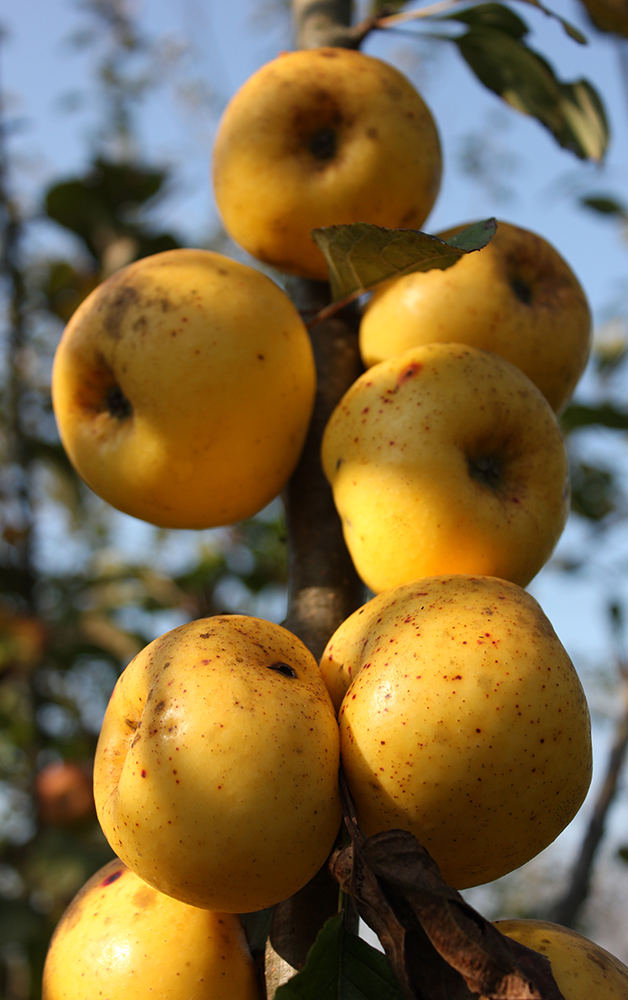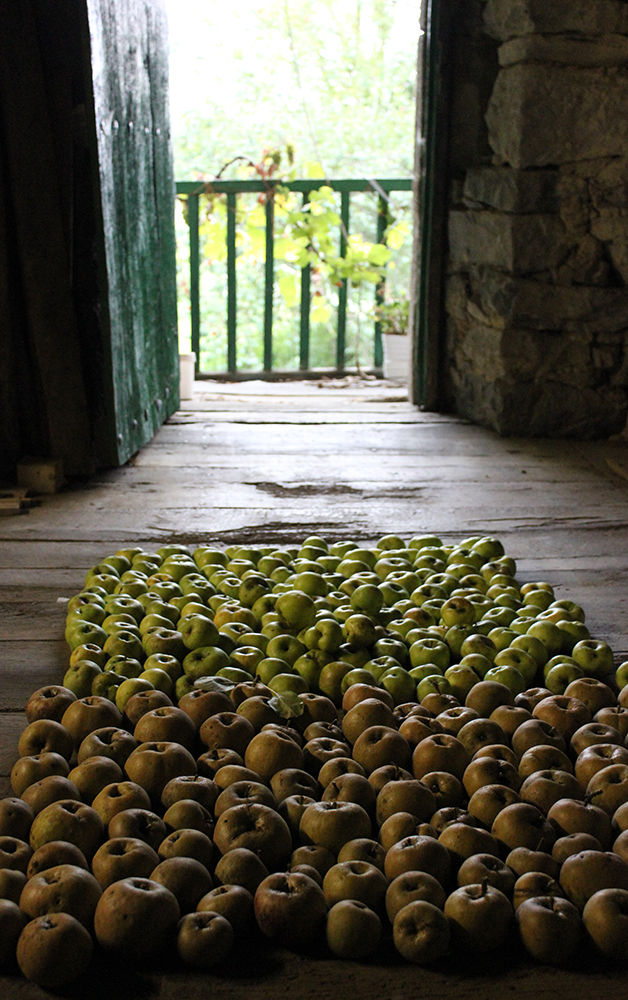Basque ethnography at a glance
Apples —sagarrak, in Basque— are an ancient crop here in Bizkaia, an amazing and vast diversity of varieties, for eating and making cider, having been preserved. Here are some of the designations gathered in the course of our fieldwork: kana-sagarra, sanjuan-sagarra, sanpedro-sagarra, santiago-sagarra, sanbartolome-sagarra, urdin sagarra, gaza sagarra, erreinetea, txarbea, papu gorria, madari-sagarra, limoi-sagarra, menbrilu-sagarra, bost kantoia, sagar gorria…
Apple trees are perfectly adapted to our humid climate, and stored in the traditional way, their fruits would stay safe and quite fresh throughout winter and spring, as is the case of the so-called ‘year apples’, or urtebeteak.
Raw, roasted, in compote or conserve, apples have always been a popular dessert. Oven-roasted apples in particular, customarily served after the daily stew, were said to be the ‘second staple food of the poor’, such was their importance to the family diet.
Cider did likewise enjoy high esteem in centuries past, both for household consumption and sale, historically sustaining an important connection with whalers and cod-fishers, for it helped keep crews healthy on board, alleviating the perilous threat of scurvy in the high seas. And its relevance becomes evident in the Old Charter of Las Encartaciones of Bizkaia, which ruled that the spilling of the cider contained in someone else’s barrel would be punishable by death.
Following a period of decline caused by the general cessation of agricultural activity, we observe a resurgence in recent times, sometimes associated with varieties selected for a more commercial type of production and the new appreciation of cider. Still, the great diversity of times gone by is unfortunately forever lost.
In spite of a huge amount of apples being marketed according to standards which prioritize uniformity and appearance over flavour, and the fact that they are readily available any time of the year, being imported from distant countries or kept in refrigeration to maintain their freshness, fruits found in farmers’ markets, grown in line with the good old methods, continue to enjoy broad acceptance.
Being such a rooted fruit in our territory, we enjoy a large number of apple varieties, their cultivation reflecting on place and family names: Sagasti, Sardui, Sagardoi, Sagarminaga, Sagarzazu, Sagarna, Sagarraga…
Ancient agricultural and farming practices which combined apple cultivation and sheep grazing, so interesting from an agroecological perspective, are maintained today; also the sustainable use of wild apple trees, which our mountains abounded with and proved highly resistant to pests, as rootstocks.
Shall our final word recreate the evocative and inviting fragrance of wonderful homegrown apples, traditionally stored for the winter in farm lofts far and wide.
Cultural Popular Heritage Department – Labayru Fundazioa
Translated by Jaione Bilbao – Ethnography Department – Labayru Fundazioa




